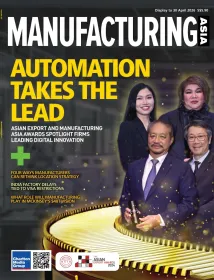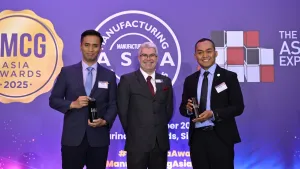
Different plays for OEMs to consider for decarbonised heat technologies
McKinsey highlighted four key areas on which they can evaluate their approaches.
As various heat electrification technologies compete for dominance in specific applications, Original Equipment Manufacturers (OEMs) face crucial decisions to answer to strategic needs.
According to McKinsey’s report, the technologies OEMs choose will depend on three points: the maturity of technologies in the market, likely after 2030; the individual heat setup and output media used within a plant; and the specific requirements of processes, such as the need for rapid heat-up times favouring e-boilers over heat pumps.
With these factors in mind, OEMs must evaluate their approaches in four key areas: portfolio choice, technology choice, market focus, and go-to-market strategies.
Portfolio choice
McKinsey noted that some players choose to focus on one technology and excel in terms of reliability, service, technical specs, and cost enablers to become best in class and win critical reference projects in the early stages.
This also allows companies to build integration capabilities in different industries, whilst others might aim to grow into large-scale players that can offer a wider range of technologies.
This could allow OEMs to support industrial players in optimising their broader energy systems and creating comprehensive plans to decarbonise their plants and processes.
In some instances, this requires combined technologies like heat recovery, heat pumps, MVR, and e-boilers.
All of these technologies need to be individually integrated, and thus broad portfolio players can offer capabilities and advisory services in different industrial sectors.
Technology choice
Technology players can pursue pilot projects in partnership with established industrial players.
Alternatively, OEMs can decide to focus on proven, mature technologies, expanding them, and building economies of scale.
These players could potentially encounter more competition but less technology and project risk. This is mainly applicable to low- to medium-temperature technologies.
Market focus
According to McKinsey, OEMs will likely need to determine which geographies they want to focus on as well as which industry sectors.
For some technologies, financial viability has already been reached or is close to being reached because of favourable fuel pricing (for instance, gas versus electricity) and carbon schemes in selected countries, mostly in Europe (other regions, such as North America, are still further out because of low fossil fuel prices).
Go-to-market approach
The report said that a successful industrial heat electrification market requires a deep understanding of customer requirements and key purchasing criteria.
Players can more accurately determine customer requirements by conducting sensitivity analyses of the levelized cost of heat based on simulation models.
Moreover, technology players can also consider extending their offerings to provide both technology and related technical-advisory services.
These services might include offering a structured decarbonisation road map with prioritisation of key processes to decarbonise along the value chain, energy efficiency or retrofit options, and, in the case of investment into new electrification assets, advisory on process integration and infrastructural requirements.
In summary, McKinsey reiterated that the key elements for a go-to-market approach are market research (the primary industry sectors and customer needs), partnerships for delivery (energy providers and engineering and construction contractors), and technical sales (dedicated sales teams with after-sales support for high reliability).
Digital services for optimised operations of heat assets are also helpful in go-to-market strategies.


















